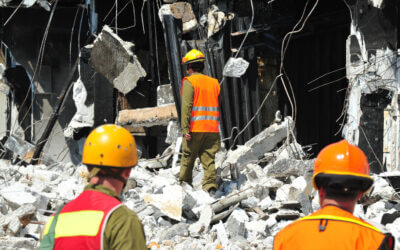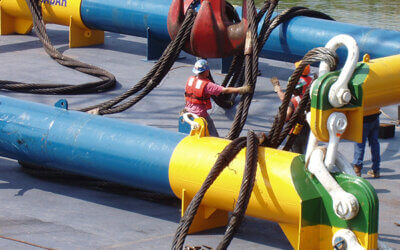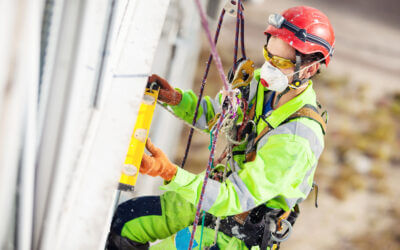“Lunch atop a Skyscraper (New York Construction Workers Lunching on a Crossbeam)” is one of the most famous images in American history. This iconic, Depression-era black-and-white photograph was shot on September 20, 1932 on the 69th floor of the RCA Building in New York City.
Of course, today, OSHA might have a few things to say about construction workers smoking and eating lunch on a crossbeam with no rigging equipment of any kind. Although this classic photograph hearkens back to a simpler time in American history, workplace safety has improved for the better in the decades since. Now, workers aren’t simply entitled to the latest fall protection equipment and rigging certification; they’re required to take the proper precautions on the job.
Rigging Certification Works: Here’s the Proof
The Occupational Safety and Health Administration has a three step mantra for preventing falls on the job, plan, provide, and train. The first two parts of the process, plan and provide, are mostly the responsibility of owners and managers. The third part, training, requires that at-risk workers take fall protection courses and obtain proper rigging certification.
All workers six feet or more above the lower levels of a building are considered at risk for serious injury, or worse. That’s why OSHA has decided that employers are responsible for providing the equipment needed to keep workers safe, which includes crucial safety gear like ladders, scaffolds, and slings.
There can be no doubt that these efforts save lives. Worker injury and illness is down to historic levels in recent years. Between 1972 and 2011, worker injury incidents dropped from 10.9 per 100 workers to just 3.4 per 100. To that end, OSHA’s small business handbook says, “OSHA believes that providing workers with a safe workplace is central to their ability to enjoy health, security and the opportunity to achieve the American dream.”
Your Guide To OSHA Fall Protection Training in 2016
According to OSHA’s official requirements, fall protection must be provided to workers at elevations of four feet in general industry environments, five feet in shipyards, six feet in construction, and eight feet in longshoring job sites.
If you’re an employer, one of the best ways to protect both your business and your workers is to find a trusted third party training service, and fast. It’s your responsibility to comply with all OSHA requirements, ANSI Z359.2 standards, and CSA regulations. Cutting corners not only exposes your business to huge financial liability, but even worse, it puts your employees in harm’s way.
To give employees the best possible protection, invest in experts that can provide both the equipment and training they need at the same time. The best training companies not only offer comprehensive fall protection courses, but can also provide the latest OSHA-compliant lifting gear and rigging supplies. This ensures your workers are trained and certified using the same equipment they’ll use on the job.
OSHA fall protection training is the last place to try and cut corners, so trust rigging certification experts to get employees ready for the job.





0 Comments